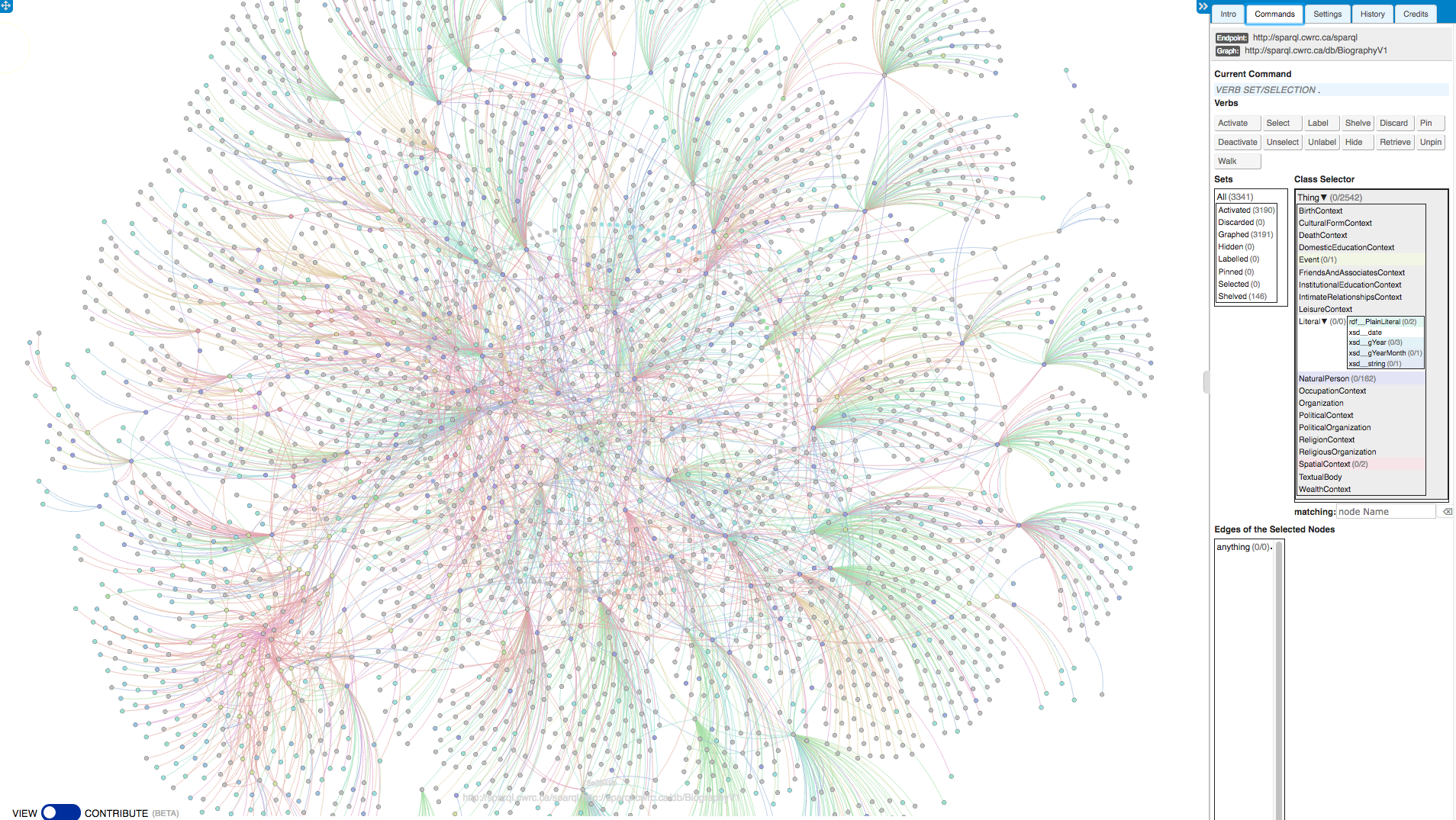huviz
interactive, customizable semantic web visualization
huviz
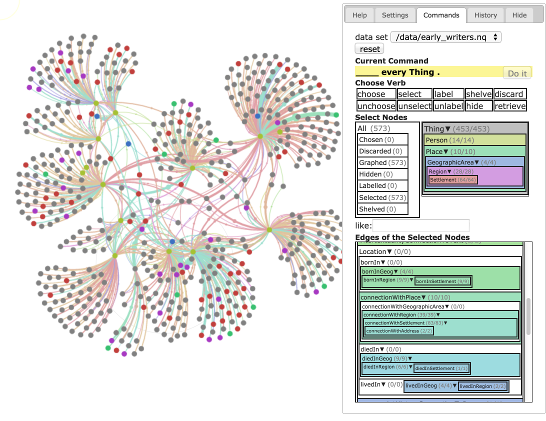
What is HuViz?
HuViz is a Semantic Web graph visualization engine which uses a powerful system of interactions which can be captured to produce replayable scripts. It is rather like SQL (the Structured Query Language) but applied to the task of creating graph visualizations. It runs as a stand-alone site and can be integrated into other sites as a visualizer for their graph content.
Pages about HuViz
Deployments
- Latest
- Production
- Classic (in coffeescript, using D3v3)
Papers and Presentations Mentioning HuViz
- Software Integration in the Digital Humanities
- HuViz: From Orlando to CWRC… And Beyond!
- REED London and the Promise of Critical Infrastructure
Development and Issues
- Development occurs at: https://github.com/smurp/huviz
- Issues are maintained at:
- https://gitlab.com/calincs/access/HuViz/-/issues
- related to http://lincsproject.ca
- https://github.com/smurp/huviz/issues
- low-level issues
- relating to integrations, embedding and so on
- https://gitlab.com/calincs/access/HuViz/-/issues
Wireframes for future directions
Sets
The commands in HuViz can be thought of as moving nodes around among various sets, where each set behaves in a particular way on screen.
- Activated – the nodes which are placed into the graph and which cause other nodes connected to them to become graphed. Dragging a node into the graph Activates it.
- Discarded – the nodes which have been placed in the disard bin and which can’t be pulled into the graph by activated nodes.
- Graphed – the nodes which are in the graph, either by being activated or by being pulled into the graph
- Hidden – the nodes which have been made invisible to reduce clutter, but which can be pulled into the graph by activated nodes
- Labelled – the nodes which show their labels continuously, rather than just when hovered near
- Nameless – the nodes which do not have pretty names
- Pinned – the nodes which have been pinned in particular places on the graph
- Selected – the nodes which have their named edges cataloged in the box labelled “Edges of the Selected Nodes” for the Draw verb to work on
- Shelved – the nodes which are kept, disconnected, on display on the sorted, circular “Shelf” around the central graph
Verbs
The Verbs are the operations which move nodes between the various sets, ie sets of nodes in particular states.
- Activate / Deactivate
- Wander
- Walk
- Select / Unselect
- Draw
- Label / Unlabel
- Shelve
- Hide
- Discard / Retrieve
- Pin / Unpin
Installation
Install huviz from github
git clone https://github.com/smurp/huviz.git
Installation (for running the server)
# install NodeJS using NVM for most flexibility
# known to work on NodeJS >= v6.11.3
# (as of this writing, the latest Long Term Support version)
https://github.com/creationix/nvm#install-script
# Install `nvm` using the curl command in 'Install Script'.
# Then quit that Terminal window and start a new one to make sure its firing up automatically.
# There are tips at the bottom of the NVM README in case of problems.
# Then install the LTS version of `node` itself like this:
nvm install --lts
# Make sure you've got a suitable version of Node
node -v # expecting v6.11.3 or later
# Then do classic normal npm stuff
npm install # install needed modules
Running the server
npm start
Development
Running the server during development
npm run watch
# watches for changes
# then runs build:*
# which creates a new lib/huviz.dist.js
# which triggers restarting the server
Running Tests “Continuously”
# in one window be running
npm run watch
# in another window run one of
npm run watchTest # runs both unit tests and user tests whenever code changes
npm run watchTest:user # runs just user tests continuously
npm run watchTest:unit # runs just unit tests continuously
Run all tests once (not continuously)
npm run test # starts a server and runs both user tests and unit tests
# prefixing the above with BAIL=1 stops test execution on first failure
BAIL=1 npm run test
To create new user tests
Install Selenium-IDE and edit the file test/user_tests.side.
Watch Selenium IDE Demo A tutorial for beginners (15min) or Selenium IDE Tutorial For Beginners for a thorough (100min) tutorial.
To create new unit tests
Add HuViz module unit tests in test using mocha and chai to match the existing style.
Developing quaff-lod
Run the auto build process while you are editing src/quaff-lod-worker.js
$ cd quaff-lod
$ npm run watch
Run the development version of huviz and tell it where to find the dev
version of quaff-lod
$ cd huviz
$ QUAFF_PATH=../quaff-lod/ npm run watch
Gallery
Finite state machine
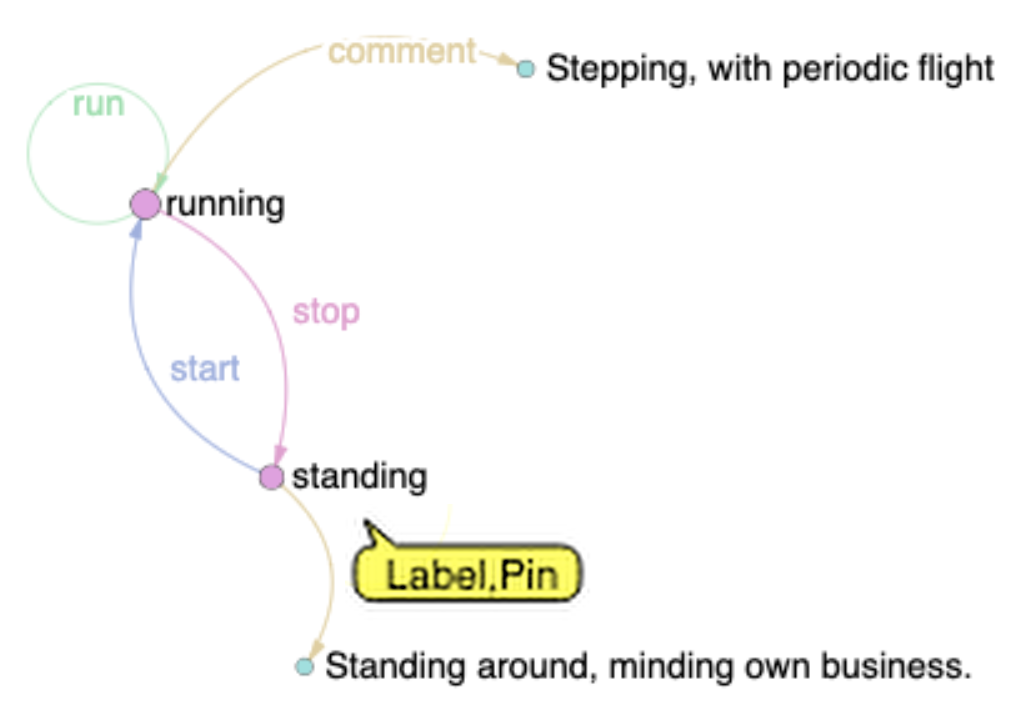
Friend of a Friend (FOAF) Ontology
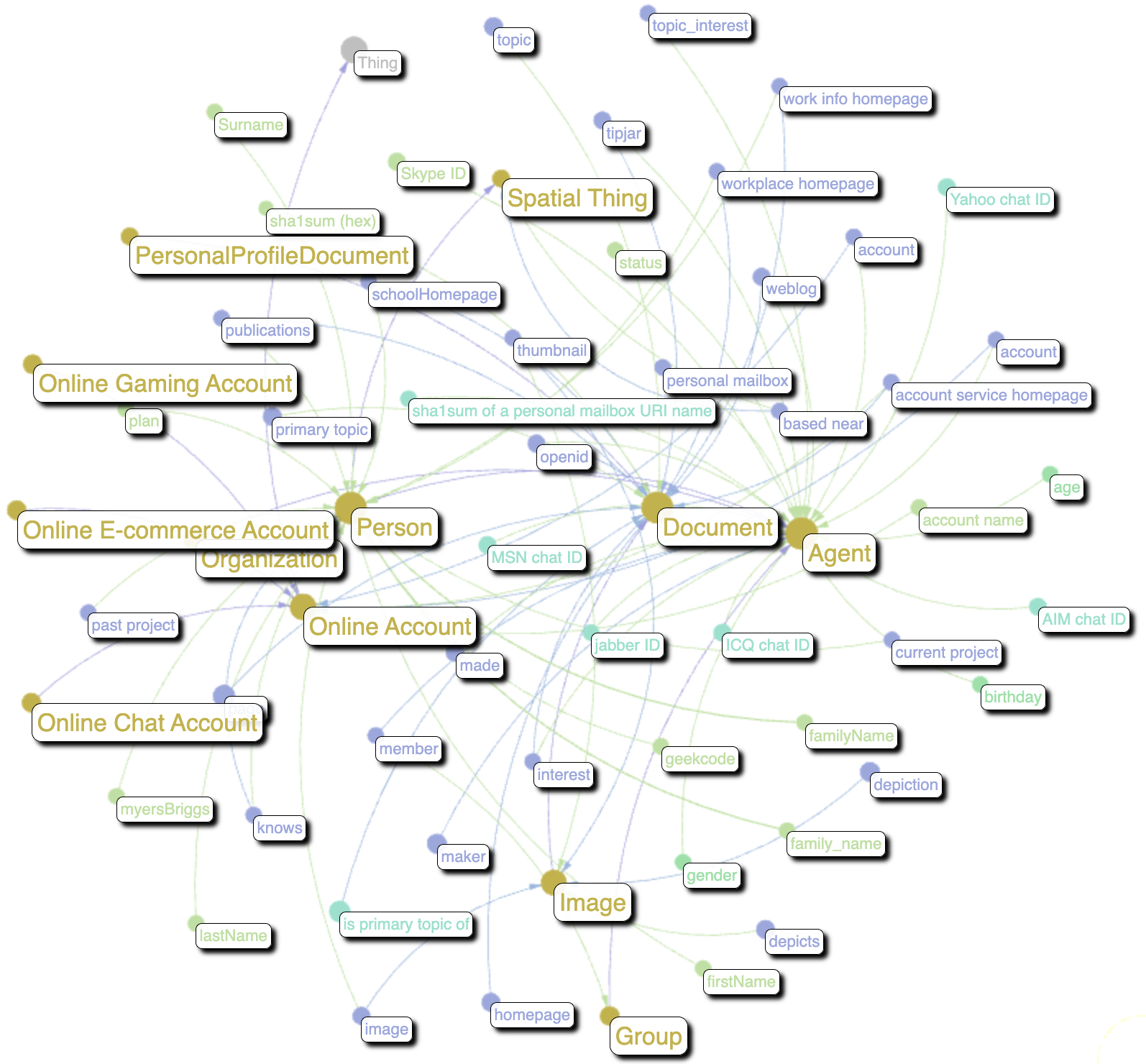
Demo of CWRC subject-centric data
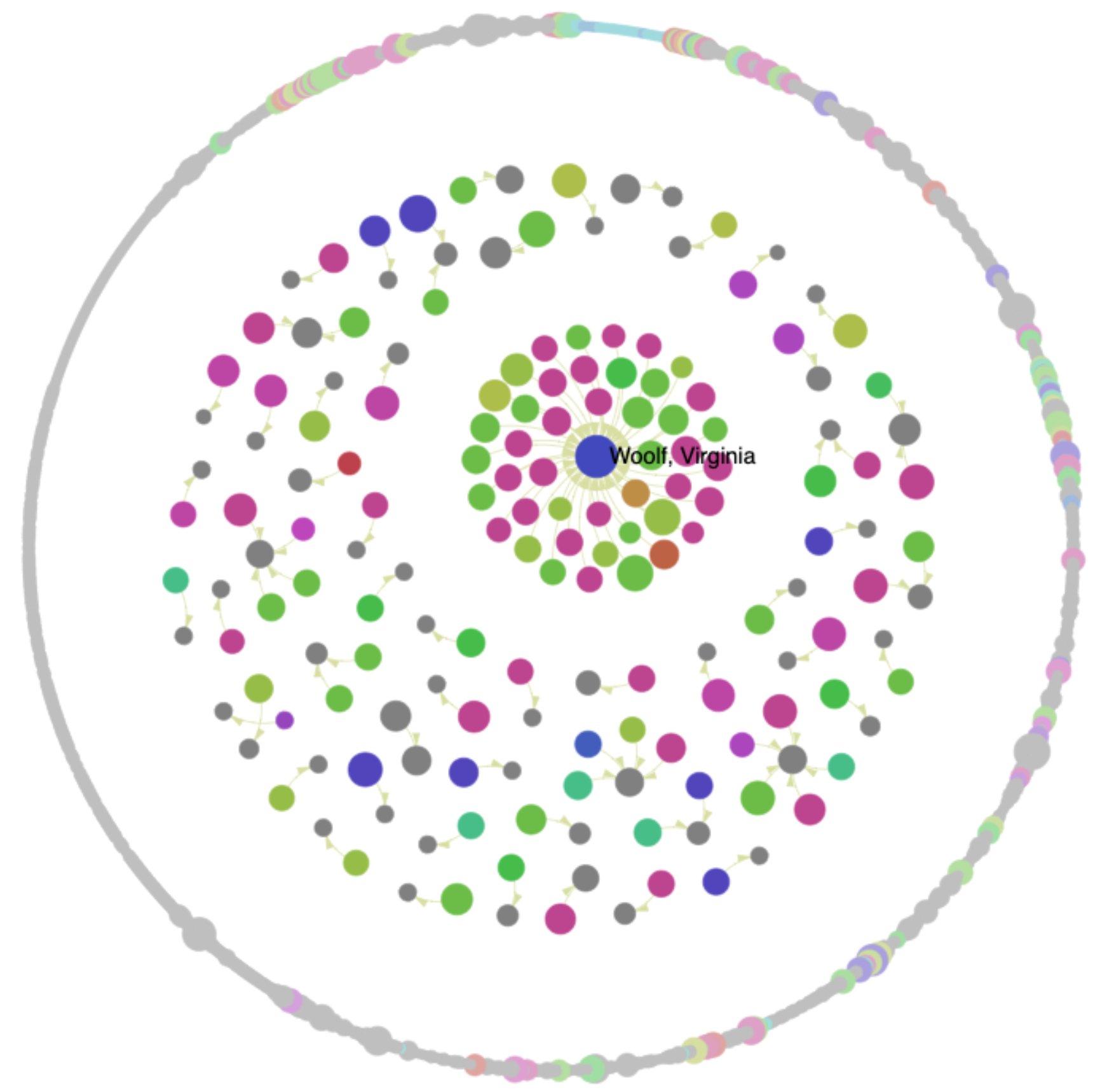
3191 Nodes
